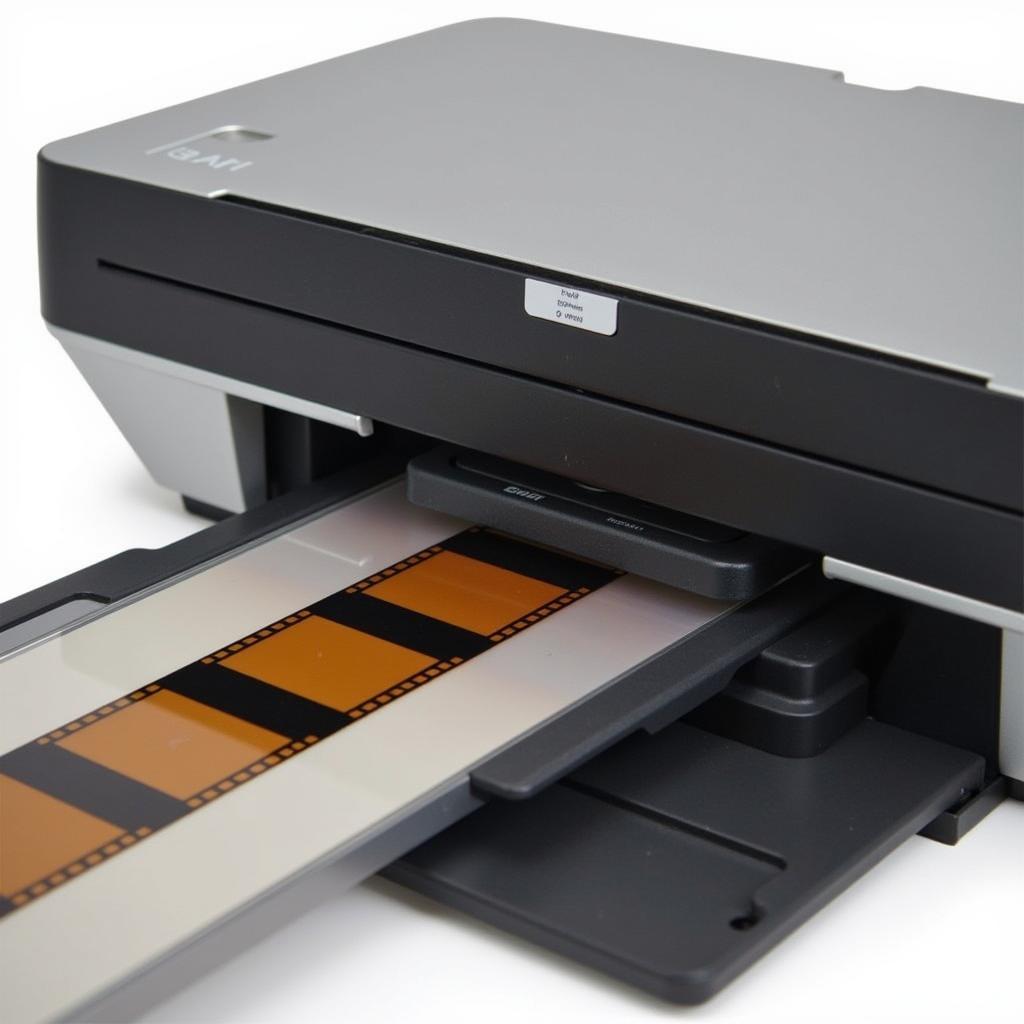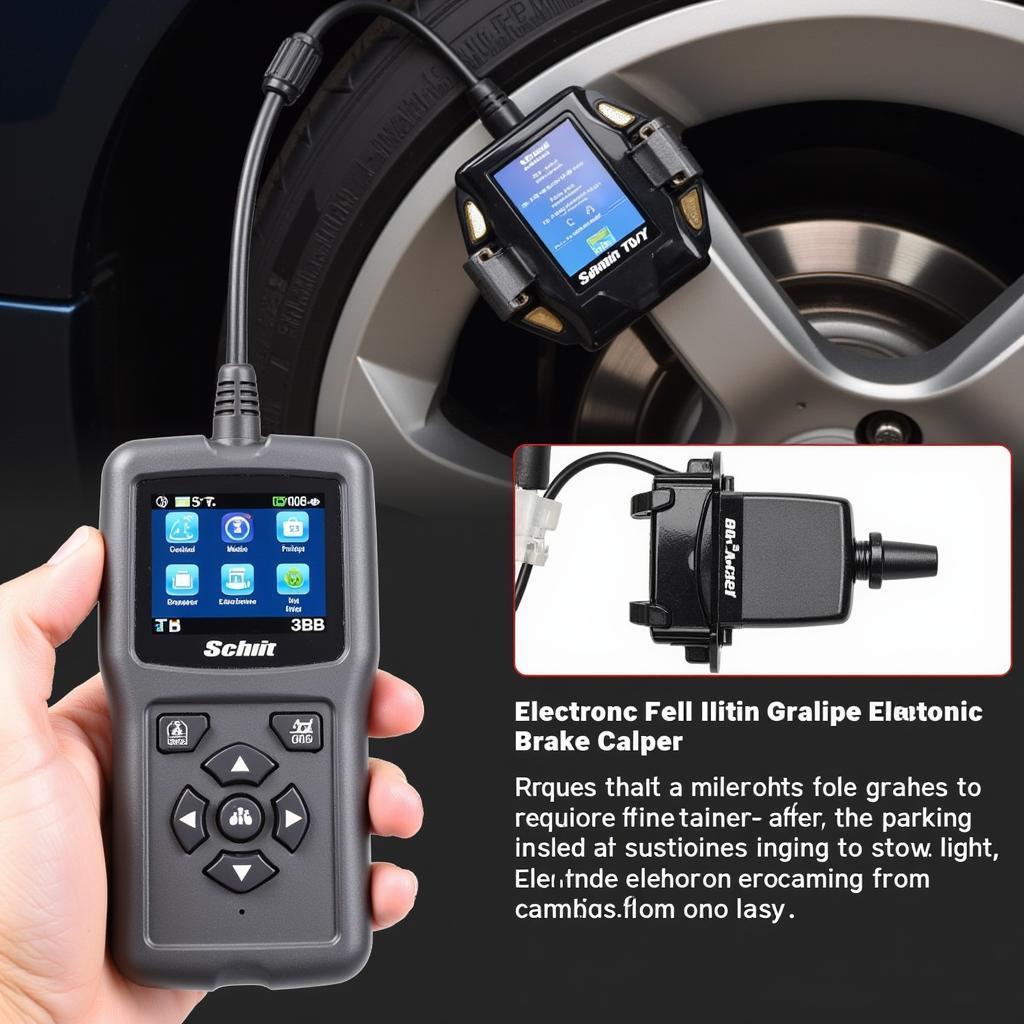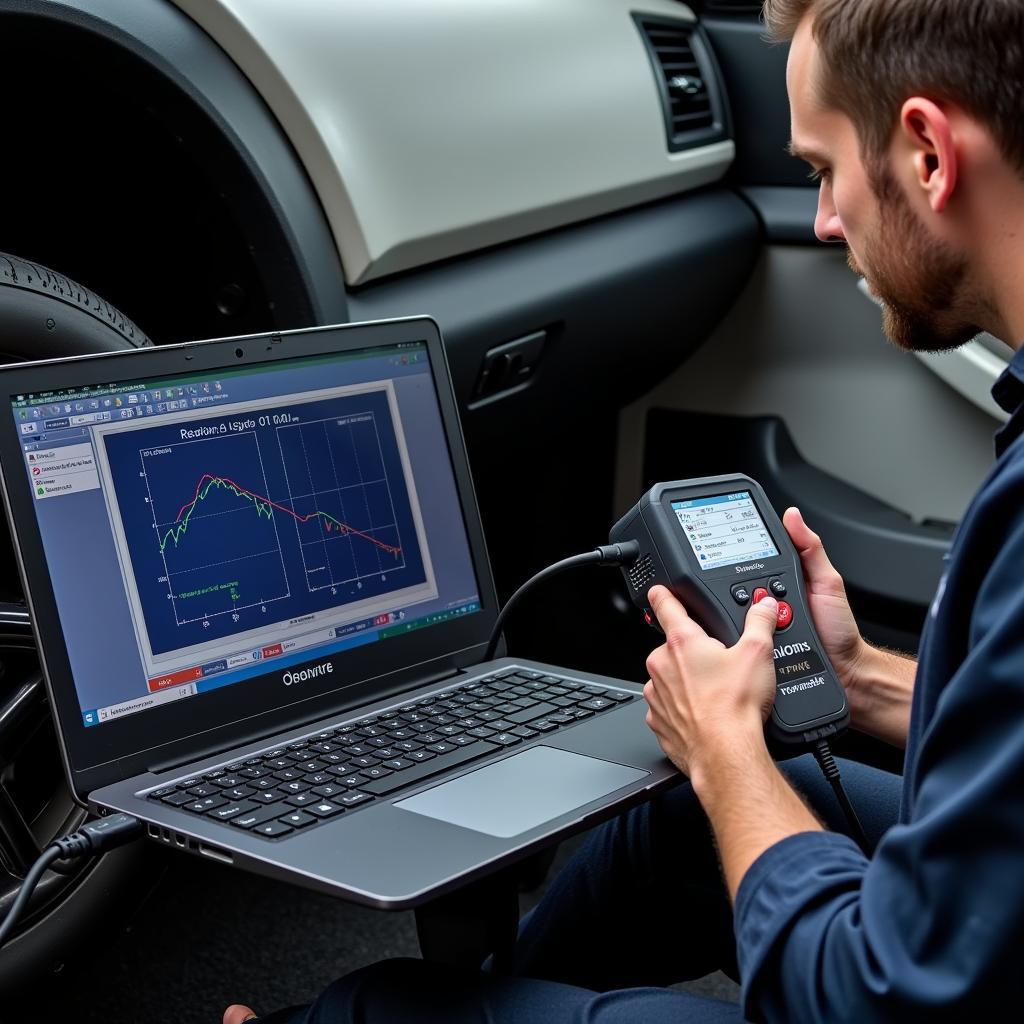Diagnostic scanners for cars have revolutionized vehicle maintenance and repair. These powerful tools empower car owners, mechanics, and technicians to pinpoint problems quickly and accurately, saving time and money. This comprehensive guide dives deep into the world of diagnostic scanners, exploring their functionality, benefits, and how to choose the right one for your needs.
Understanding the Power of a Diagnostic Scanner for Cars
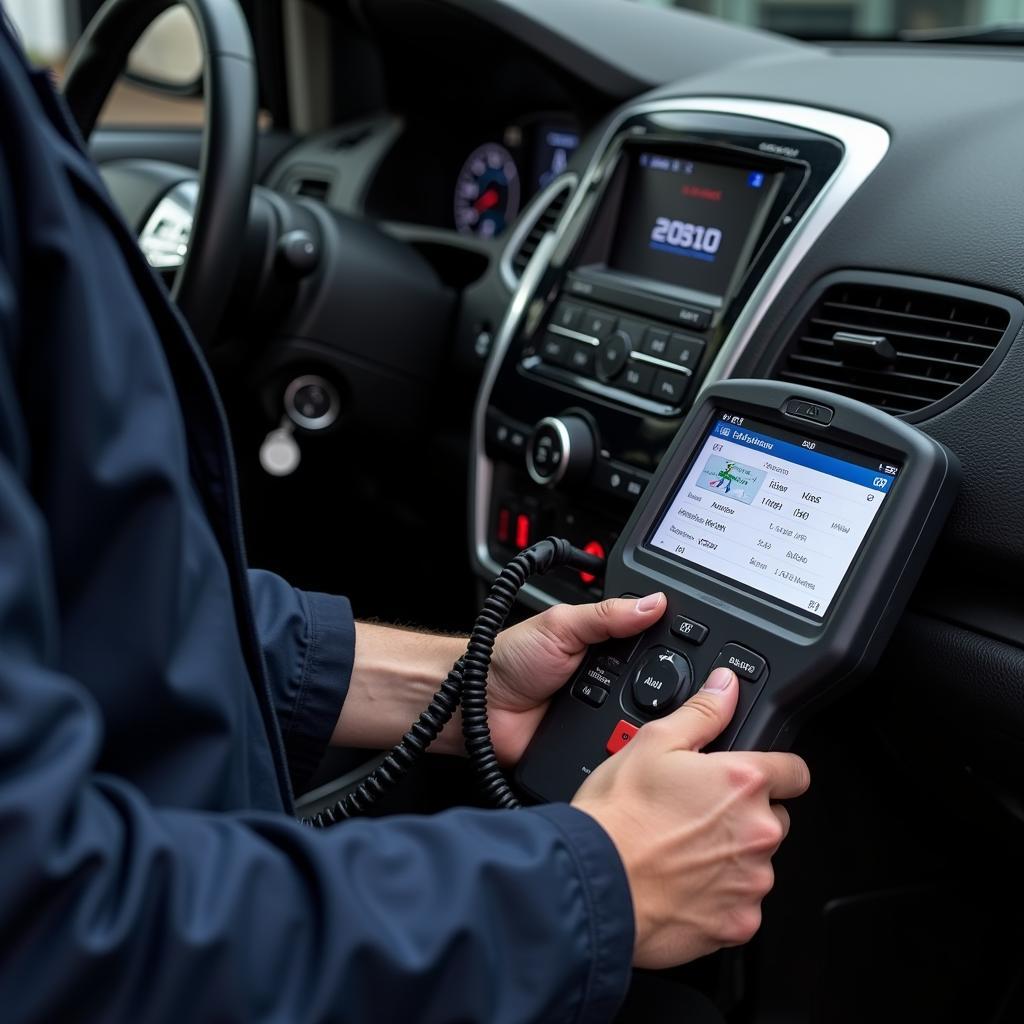 Mechanic Connecting a Diagnostic Scanner to a Car's OBD Port
Mechanic Connecting a Diagnostic Scanner to a Car's OBD Port
Just like a doctor uses a stethoscope to listen to a patient’s heartbeat, a Diagnostic Scanner For Cars listens to your vehicle’s internal systems. It communicates with the car’s onboard computer, retrieving diagnostic trouble codes (DTCs) that indicate specific issues. These codes, along with live data streams from various sensors, provide valuable insights into the car’s health and performance. Having a diagnostic scanner, whether you’re a professional or a DIY enthusiast, provides an undeniable advantage in understanding and addressing automotive problems.
Similar to code scanner cars, these devices have become essential tools for anyone working with vehicles. Imagine trying to diagnose a complex engine issue without knowing where to start. A diagnostic scanner eliminates the guesswork, providing concrete data to guide your troubleshooting process.
Choosing the Right Diagnostic Scanner for Cars: A Comprehensive Guide
With a plethora of diagnostic scanners available, selecting the right one can feel overwhelming. Consider factors like your budget, the makes and models of cars you work with, and the level of detail you require. Basic code readers can retrieve DTCs, while advanced scan tools offer features like live data streaming, bi-directional control, and special functions for specific vehicle systems. Understanding your needs is paramount.
Key Features to Look For in a Diagnostic Scanner
- Code Reading and Clearing: This is the fundamental function of any scanner, allowing you to retrieve and clear DTCs.
- Live Data Streaming: Monitor real-time sensor data to understand how different systems are performing.
- Bi-directional Control: Test components by activating them directly through the scanner, such as turning on the fuel pump or cycling the ABS system.
- Special Functions: Access manufacturer-specific functions for advanced diagnostics and programming.
- Vehicle Coverage: Ensure the scanner supports the makes and models you work with, especially if you specialize in certain brands.
This is especially crucial when dealing with engine diagnostic scanner for classic cars, as compatibility can be a concern. Understanding the specific communication protocols used in older vehicles is important when choosing a scanner.
How to Use a Diagnostic Scanner for Cars Effectively
Using a diagnostic scanner is generally straightforward. Locate your car’s OBD-II port, typically under the dashboard, and connect the scanner. Turn on the ignition and follow the scanner’s instructions to read and interpret the retrieved codes. Refer to a reliable repair manual or online database to understand the meaning of each code.
Troubleshooting Common Car Problems with a Diagnostic Scanner
Diagnostic scanners are invaluable for tackling a wide range of car problems. Here are some examples:
- Check Engine Light: Quickly identify the cause of the dreaded check engine light, from a loose gas cap to a more serious engine malfunction.
- Transmission Issues: Diagnose problems with shifting, slippage, or other transmission irregularities.
- ABS Problems: Pinpoint issues with the anti-lock braking system, ensuring optimal safety.
- Airbag System Malfunctions: Diagnose problems with the airbag system and ensure proper deployment in case of an accident.
- Emissions Problems: Identify issues that could be causing your car to fail emissions tests.
Why Invest in a Diagnostic Scanner for Cars?
The benefits of owning a diagnostic scanner for cars are numerous.
- Save Money on Repairs: Diagnose problems yourself and avoid unnecessary trips to the mechanic.
- Empowerment and Control: Take control of your car’s maintenance and avoid being reliant on others.
- Faster Troubleshooting: Quickly identify issues and get your car back on the road faster.
- Improved Resale Value: Maintain a detailed record of your car’s maintenance history, which can increase its resale value.
Similar to the convenience offered by https premium cars free-police-scanner ntwrk ba&cmpg 05_02_mt_us_rs_ba_01_01_web, having a diagnostic scanner gives you access to information that can save you time and hassle. It’s like having a personal mechanic at your fingertips.
Future Trends in Diagnostic Scanners for Cars
As technology advances, diagnostic scanners are becoming even more sophisticated. We can expect to see features like cloud-based diagnostics, augmented reality integration, and predictive analytics that can anticipate potential problems before they occur.
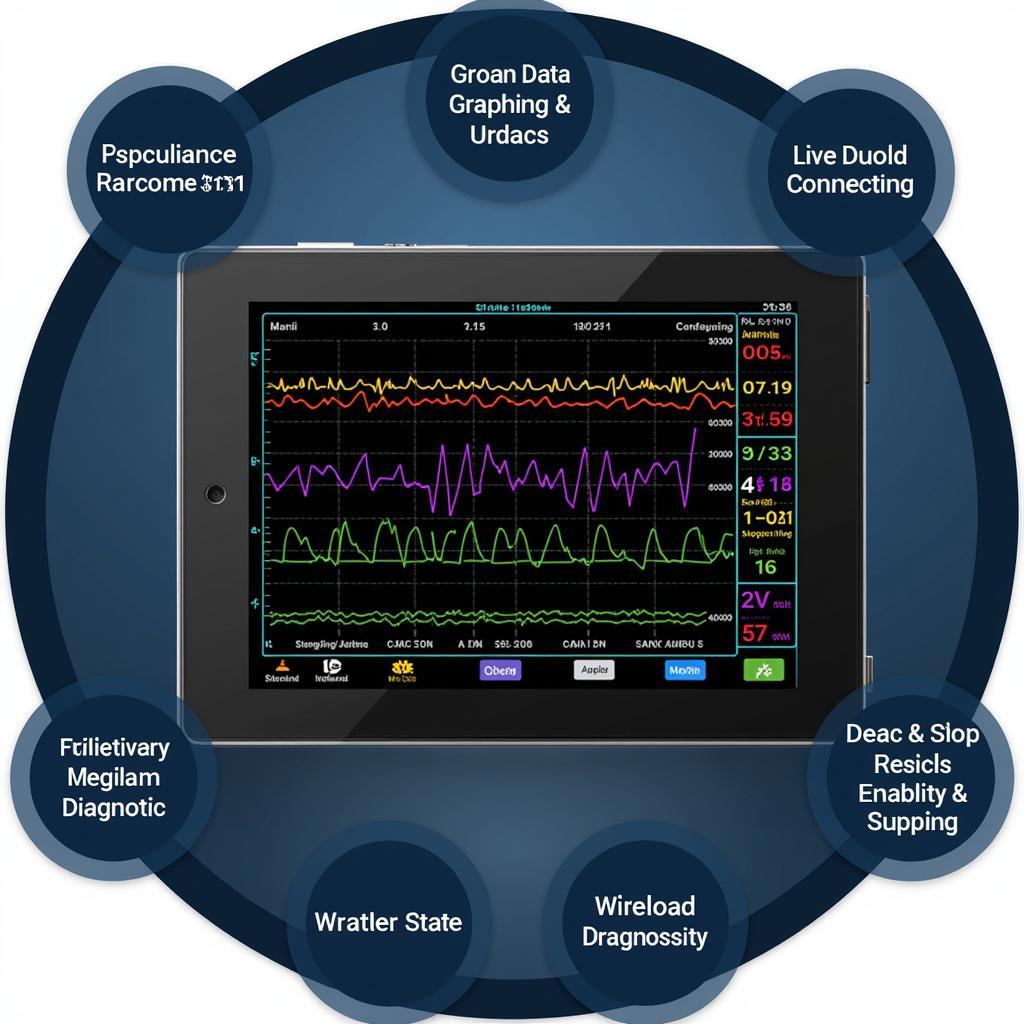 Advanced Diagnostic Scanner with Tablet Interface
Advanced Diagnostic Scanner with Tablet Interface
Just as obd cars scanner have become commonplace, we’ll see even more integration with smartphones and other mobile devices. Tools like iphone code scanner for cars are paving the way for greater accessibility and user-friendliness.
Conclusion
Diagnostic scanners for cars are essential tools for anyone involved in vehicle maintenance and repair. From simple code readers to advanced scan tools, choosing the right scanner can empower you to troubleshoot problems efficiently and effectively. By understanding the capabilities of these tools and investing in one that meets your needs, you’ll take a significant step towards maintaining your car’s health and performance.
Contact ScanToolUS at +1 (641) 206-8880 or visit our office at 1615 S Laramie Ave, Cicero, IL 60804, USA for any assistance.

